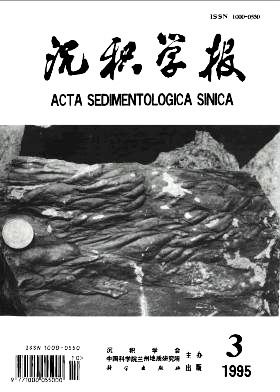Characteristics of Proterozoic Carbonate Rocks in Jixian by Means of the Oxygen and Carbon Isotope Composition
- Received Date: 1994-06-16
- Publish Date: 1995-09-10
Abstract: The Middle-Upper Proterozoic Eon in Jixian County, Tianjin, is a sedimentary series measured for 3000m in thickness. The middle- ower part of which is mainly composed of primary sedimentary dolostone, while the upper Part mostly of limestone. Seventeen dolostone and calcite samples were selected to determine the oxygen and carbon isotope in order to analyse the diagenesis and paleosalinity, then to discuss the genesis of the dolomite accumulated there 1) DiagenesisWhen plentiful rains fare present on land-surface, a vadose zone, where the 18O.12C Contents would be plantiful would appear. Yangzhuang Formation shows larger negative values of δ18O and δ13C. From these analytic data, it can be seen that the carbonate rocks of Yangzhuang Formation and Tuaneshanzi Formation have a δ13C Value of -3.53‰, and the other δ13C value of carbonate rocks of stratigraphic formations varies in the range from+1‰, to-1‰, The δ18O value has the similar changes. It is interesting in Wumishan FOrmation that the oxygen and carbon isotopes of carbonate rocks in sedimentary micro factes reflect that fresh water perticipated in the course of diagenesis, and from this point of view it can be seen that greater part of carbonate rocks of the Upper-Middle Proterozoic in Jixian is of primarily sedimentary origin.2) Paleosalinity The value of δ18O in seawater is increasing with the increase of salinity, and the δ18O value may be applied as an indicator for peleosalinity. The increase of its value may reflect the augment o f Paleosalinity. The carbonate rocks of Wumishan Formation may reflect such a change that indirectly shows the primary depositional properties of dolostone in situ, this may provide the quantitative signs for sedimentary factes.
| Citation: | Zhao Zhen. Characteristics of Proterozoic Carbonate Rocks in Jixian by Means of the Oxygen and Carbon Isotope Composition[J]. Acta Sedimentologica Sinica, 1995, 13(3): 46-53. |






 DownLoad:
DownLoad: